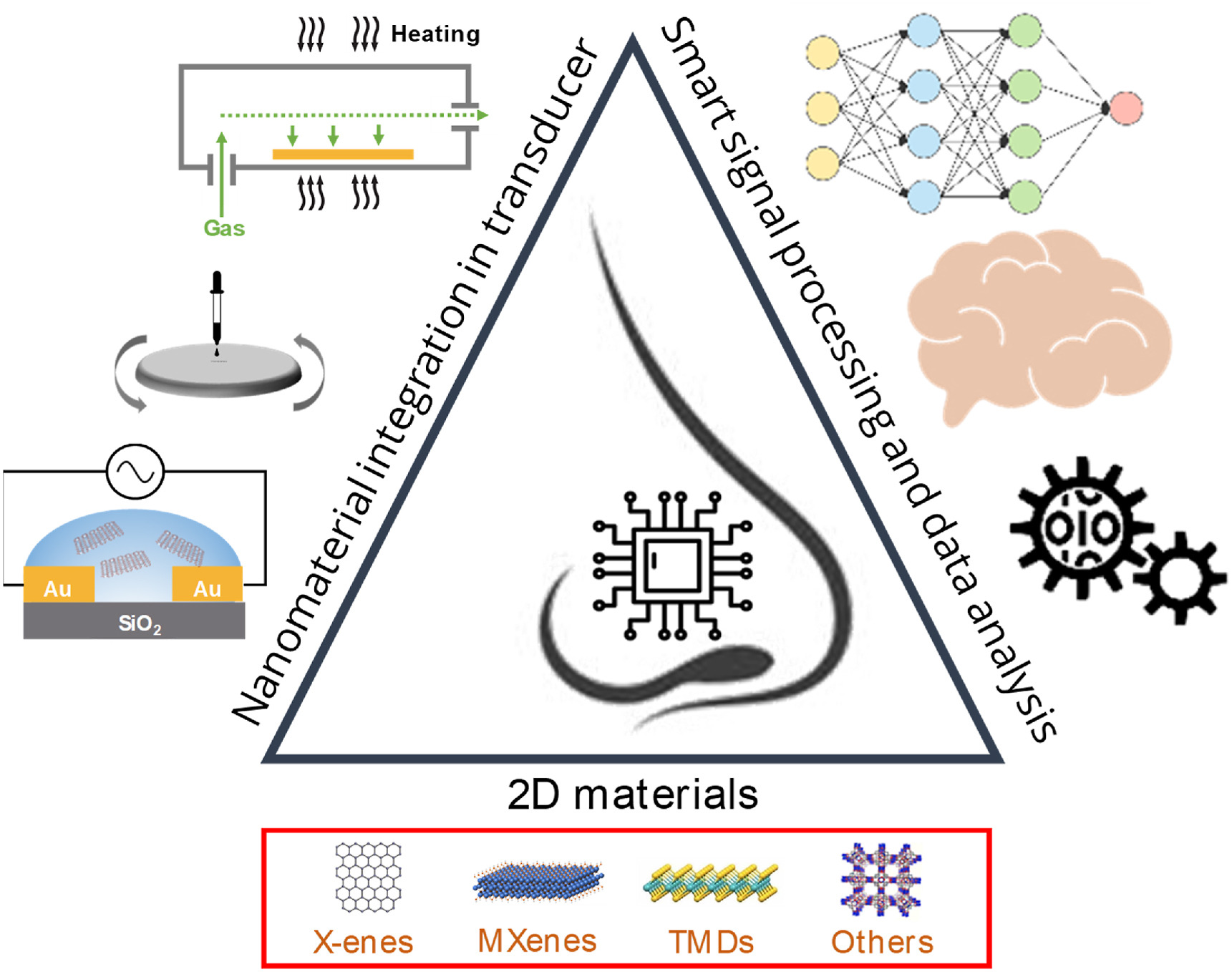Inspired by biological noses, their electronic counterparts i.e. e-noses are designed to imitate them by detecting and identifying surrounding gases and volatile compounds through the use of gas sensor arrays. These arrays are typically composed of metal oxide sensors, which are limited by energy efficiency and sensitivity issues. However, the use of two-dimensional materials as active elements has shown promising results addressing these hurdles due to their remarkable sensitivity at room temperature. Since the revolutionary discovery of graphene and the synthesis or exfoliation of a myriad of nanosheets, these have been integrated into high performance gas sensors for e-noses. In this review, we highlight the significant advancements and technologies in developing these devices, including the transduction mechanisms used to translate gas adsorption events into measurable signals and the methods for depositing 2D materials as part of the transducers. To overcome the issue of selectivity that often imposes a limitation to nanomaterial-based gas sensors, we discuss the potential of implementing artificial intelligence tools as the brain behind the sensor for smart data analysis.

Inspired by biological noses, their electronic counterparts i.e. e-noses are designed to imitate them by detecting and identifying surrounding gases and volatile compounds through the use of gas sensor arrays. These arrays are typically composed of metal oxide sensors, which are limited by energy efficiency and sensitivity issues. However, the use of two-dimensional materials as active elements has shown promising results addressing these hurdles due to their remarkable sensitivity at room temperature. Since the revolutionary discovery of graphene and the synthesis or exfoliation of a myriad of nanosheets, these have been integrated into high performance gas sensors for e-noses. In this review, we highlight the significant advancements and technologies in developing these devices, including the transduction mechanisms used to translate gas adsorption events into measurable signals and the methods for depositing 2D materials as part of the transducers. To overcome the issue of selectivity that often imposes a limitation to nanomaterial-based gas sensors, we discuss the potential of implementing artificial intelligence tools as the brain behind the sensor for smart data analysis.
